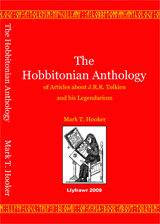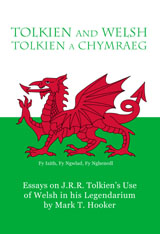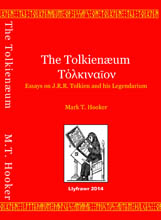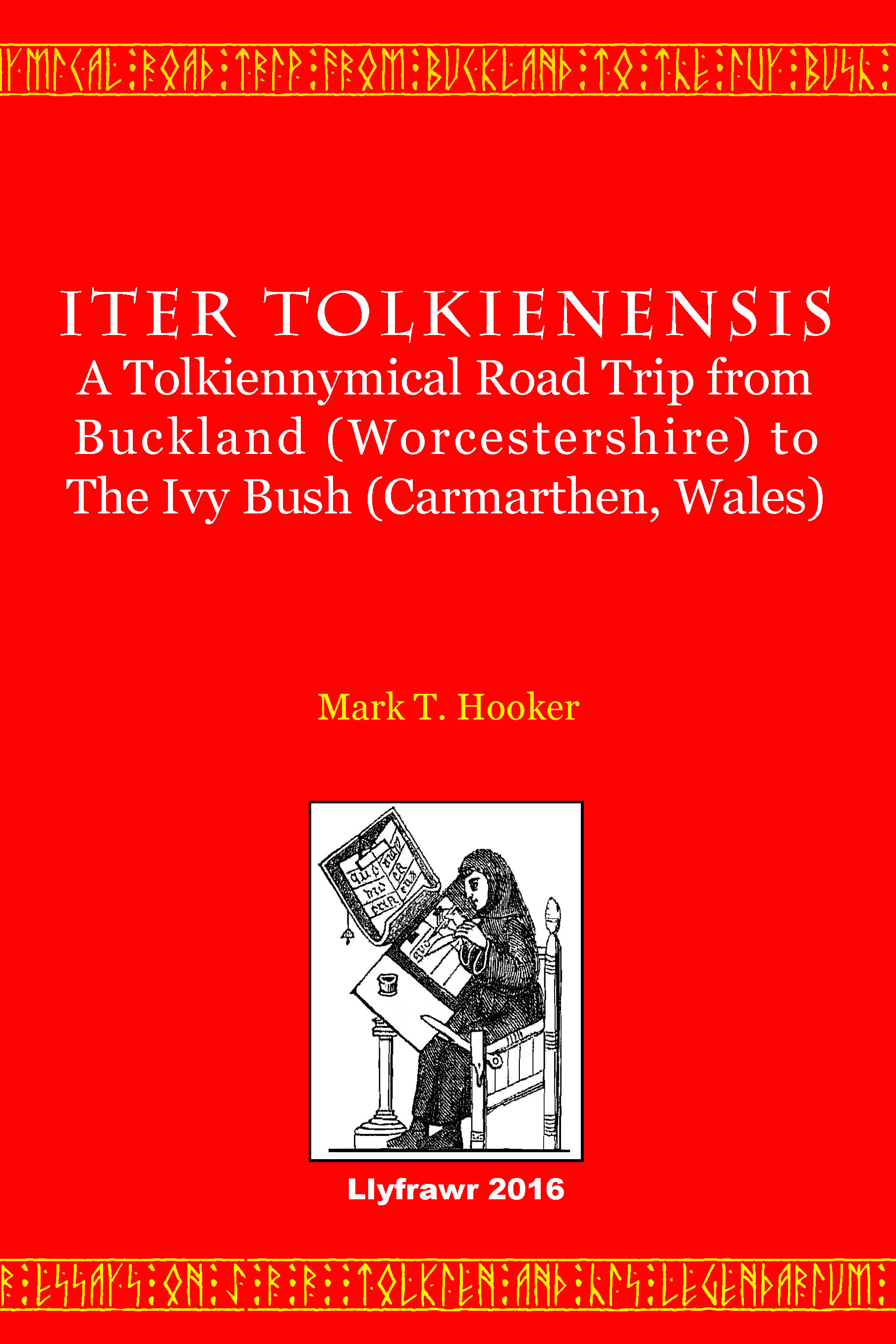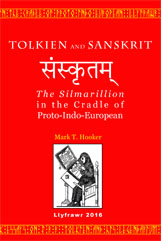or Searching for the Origins of Elvo-Indo-European in Tolkien’s Elvish Lexicon
|
Also by this author: 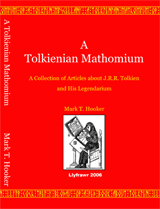
| From the Author’s ForewordPart I of this volume (Linguistic Masques) looks at Tolkien’s ‘speaking names.’ These names do more than just identify the character to whom they are attached; they say something about them as well. Here, the reader will learn more about the names Strider (who has a Celtic Theonym as an antecedent), Míriel, Finwë, & Fëanor (whose names show the power of lenition as a story telling device), The Black Breath & Kingsfoil (a pun, the disease, and the cure), and Gong (a pejorative name for Orcs that only a philologist could dig up). Part II (The Story Behind the Name) explores the myths and literary baggage of such names as those of the Sun Maiden, the Horned Moon, the full moon, the Man in the Moon, the Walls of the World, the concept of white, the Divine Mannus, and how Homo Loquens found a home in Middle-earth. Part III (Bones of the Oxen in Tolkien’s Linguistic Soup) looks more closely at Tolkien’s linguistic creations from a linguistic perspective. On the one hand, Tolkien complained that commentators analyzing his names normally had no idea how a philologist would go about creating them, adding that the “source, if there was one,” for his names only provided the sound silhouette of the name, “and its purport in the source is totally irrelevant, except in the case of Earendil.” (L.380) On the other hand, a number of commentators with a knowledge of philology, including both Christopher and the senior Tolkien, have pointed out many more exceptions than just Earendil. “It is noteworthy,” wrote Christopher, “that my father introduced a kind of ‘historical punning’ here and there: so for instance the root SAHA ‘be hot’ yields (beside saiwa ‘hot’ or sára ‘fiery’) Sahóra ‘the South’, and from NENE ‘flow’ come nen ‘river’, nénu ‘yellow water-lily’, and nénuvar ‘pool of lilies’ — cf. nenuphar ‘water-lily’, modern French nenufar. There are also several resemblances to early English that are obviously not fortuitous, as hôr ‘old’, here ‘rule’, rûm ‘secret (whisper)’.” (HoMe i.248) Tolkien himself admits that, though he was not aware of ‘borrowing’ it at the time, “it is probable, but by no means certain, that the names were nonetheless ‘echoes’.” One of the names he is talking about is “nazg: the word for ‘ring’ in the Black Speech.” It was, he says, “devised to be a vocable as distinct in style and phonetic content from words of the same meaning in Elvish, or in other real languages that are most familiar: English, Latin, Greek, etc.” Tolkien considers it “remarkable that nasc is the word for ‘ring’ in Gaelic (Irish: in Scottish usually written nasg),” and that it “also fits well in meaning, since it also means, and prob. originally meant, a bond, and can be used for an ‘obligation’. Nonetheless I only became aware, or again aware, of its existence recently in looking for something in a Gaelic dictionary. … It is thus probable that nazg is actually derived from it, and this short, hard and clear vocable, sticking out from what seems to me (an unloving alien) a mushy language, became lodged in some corner of my linguistic memory.” (L.384-385) In a discussion of the name Incánus, which was considered to possibly be “a Quenya name devised for [Gandalf] which later became obsolete, and was remembered only by the learned,” Christopher notes that his “father referred to the Latin word incánus (grey-haired) in such a way as to suggest that this was the actual origin of this name.” If this were true, says Christopher, it would be “very surprising.” At the end of his discussion of the name, the senior Tolkien “remarked that the coincidence in form of the Quenya name and the Latin word must be regarded as an ‘accident’, in the same way that Sindarin Orthanc (Forked Height) happens to coincide with the Anglo-Saxon word orþanc (cunning device), which is the translation of the actual name in the language of the Rohirrim.” (UT:400) In her paper “Elvish Loanwords in Indo-European: Cultural Implications,” Lise Menn[1] makes the point that there can be no “doubt that speakers of Quenya, Sindarin, or both, had contact with the speakers of Proto-Indo-European,” because “the descendants of some Elvish loanwords are found well-distributed in the Indo-European languages.” So, while it may have been Tolkien’s view that it was ‘very surprising’ and ‘accidental’ for Tolkiennyms to coincide with first-world forms, having ‘become lodged in some corner of his linguistic memory,’ he concedes that: “Nonetheless one’s mind is, of course, stored with a ‘leaf-mould’ of memories (submerged) of names, and these rise up to the surface at times, and may provide with modification the bases of ‘invented’ names.” (L.409) Tolkien observed that a fairy-story is “a thing built on or about, Fantasy, of which Fantasy is the core. Fantasy is made out of the Primary World, but a good craftsman loves his material, and has a knowledge and feeling for clay, stone and wood which only the art of making can give.” (OFS 59) Tolkien’s fairy-story, however, is not built with those materials, but rather out of words. Tolkien was, therefore, a craftsman who worked with words. He loved his material and had a knowledge and feeling for words and language ‘which only the art of making can give.’ In the “Epilogue” to “On Fairy-stories,” Tolkien remarks that “probably every writer making a secondary world, a fantasy, every sub-creator, wishes in some measure to be a real maker, or hopes that he is drawing on reality: hopes that the peculiar quality of this secondary world (if not all the details) are derived from Reality, or are flowing into it. If he indeed achieves a quality that can be fairly described by the dictionary definition: “inner consistency of reality,” it is difficult to conceive how this can be, if the work does not in some way partake of reality.” (OFS 70) In other words, the words that make up the languages of Middle-earth draw on reality, are derived from reality, or are flowing into it. That is why Lise Menn can speak of ‘the descendants of some Elvish loanwords’ being ‘found well-distributed in the Indo-European languages.’ Tolkien was, however, never a slavish copyist, but rather, as Miesel so sagaciously points out, “Tolkien’s orderly mythological adaptations are as creative as his own original inventions for The Lord of the Rings. He is no plunderer quarrying an ancient palace for stones to build a hut, but a master jeweler recutting and repolishing old gems for new settings.”[2] This volume is, therefore, an excursion into the ‘leaf-mould’ of Tolkien’s mind, to see how Tolkien recut and repolished old words to make them new. [1] Lise Menn, “Elvish Loanwords in Indo-European: Cultural Iplications,” An Introduction to Elvish, Jim Allan (ed. & compiler), Frome, Somerset: Bran’s Head Books, 1978, p. 143. Paper read at the 1st International Conference of the Society for Elvish Studies, Oswego, NY, July 1976. [2] Sandra Miesel, Myth, Symbol & Religion in The Lord of the Rings, T.K. Graphics, 1973, p. 38.
|
Pagination: xliv + 256. Trade Paper $14.95.
To learn more about the book, follow the links below.

